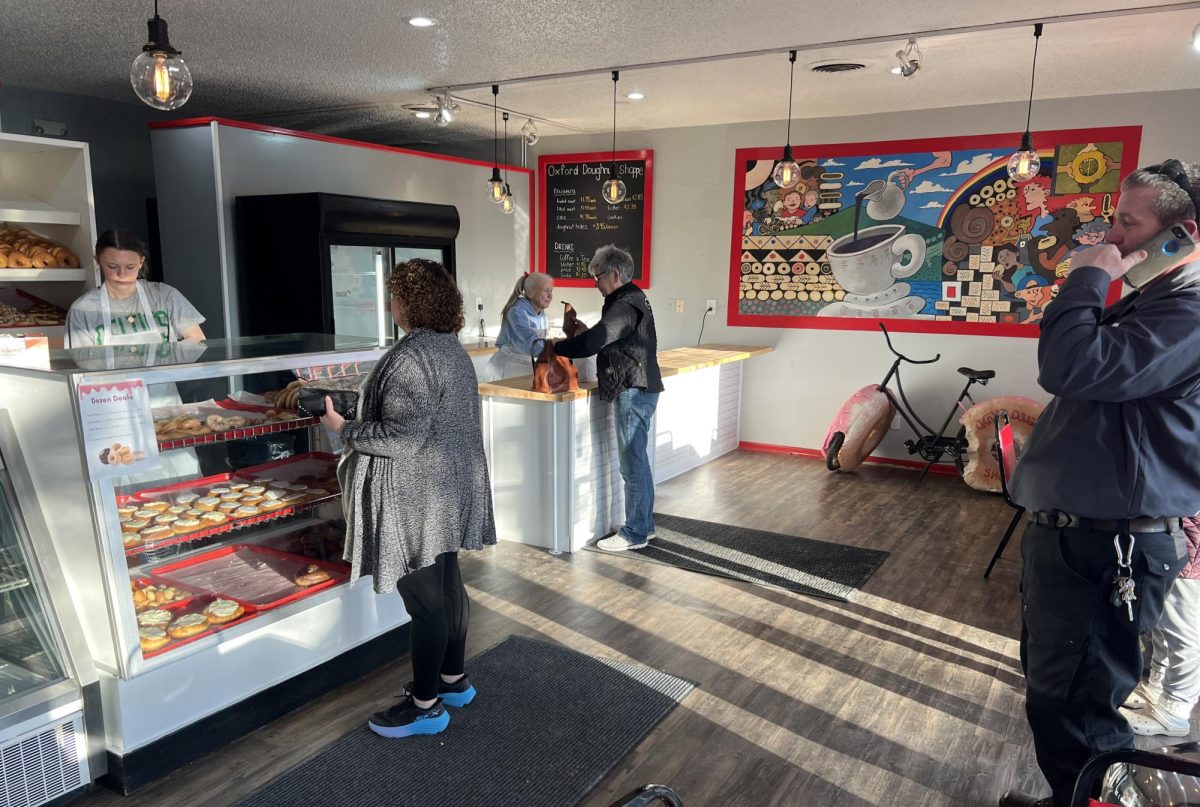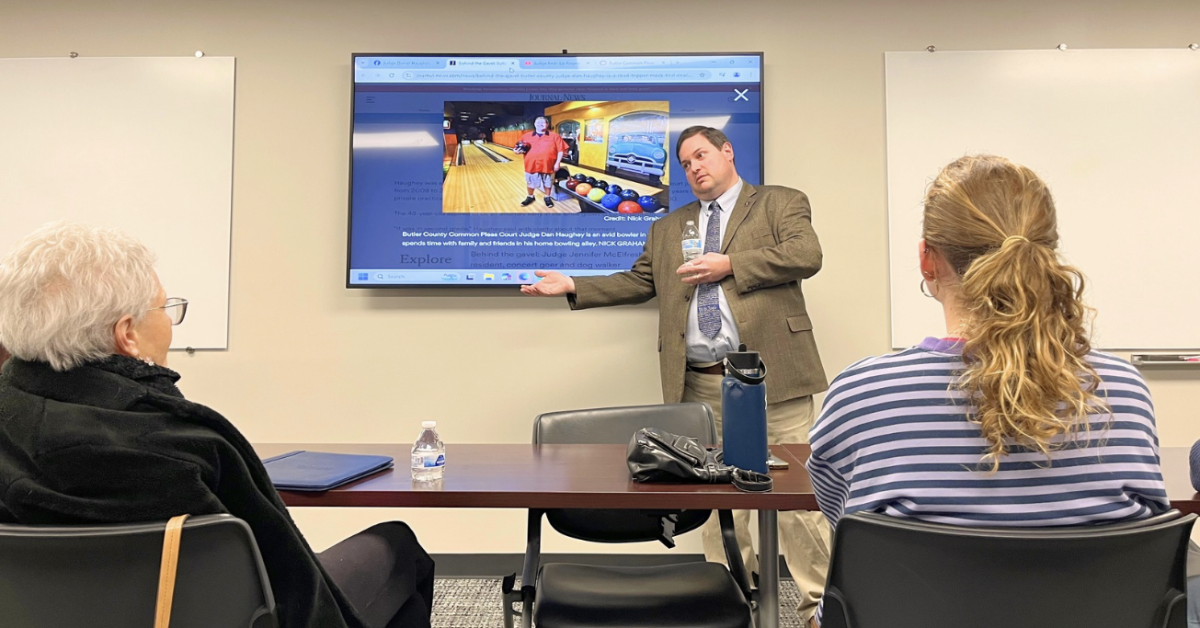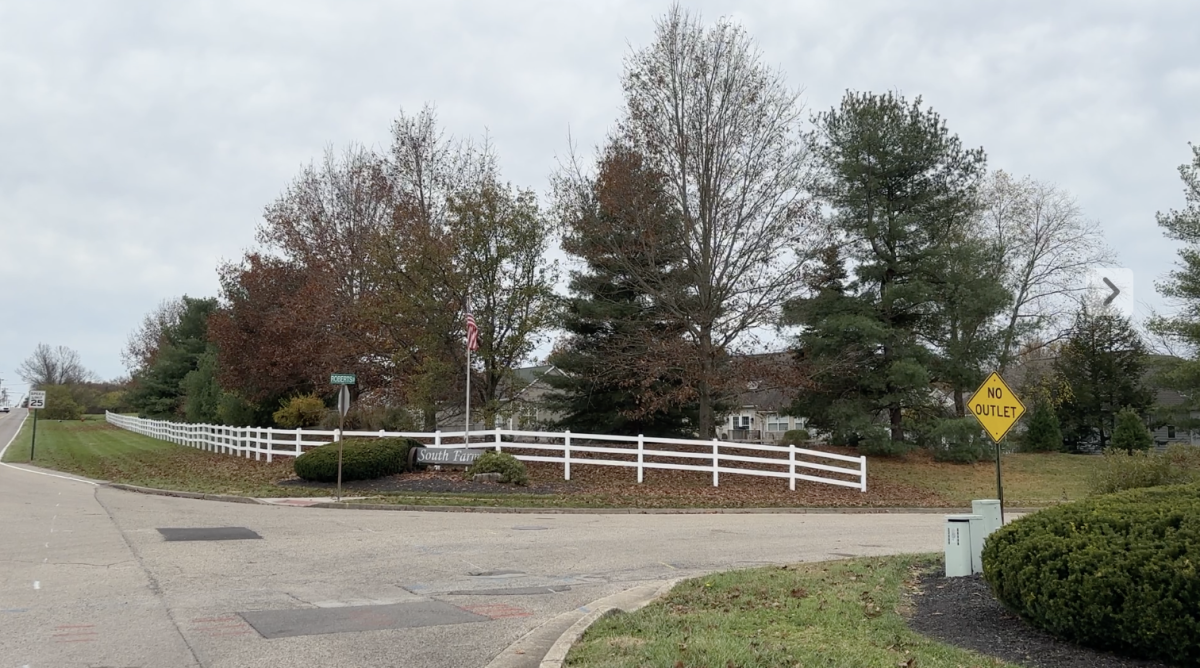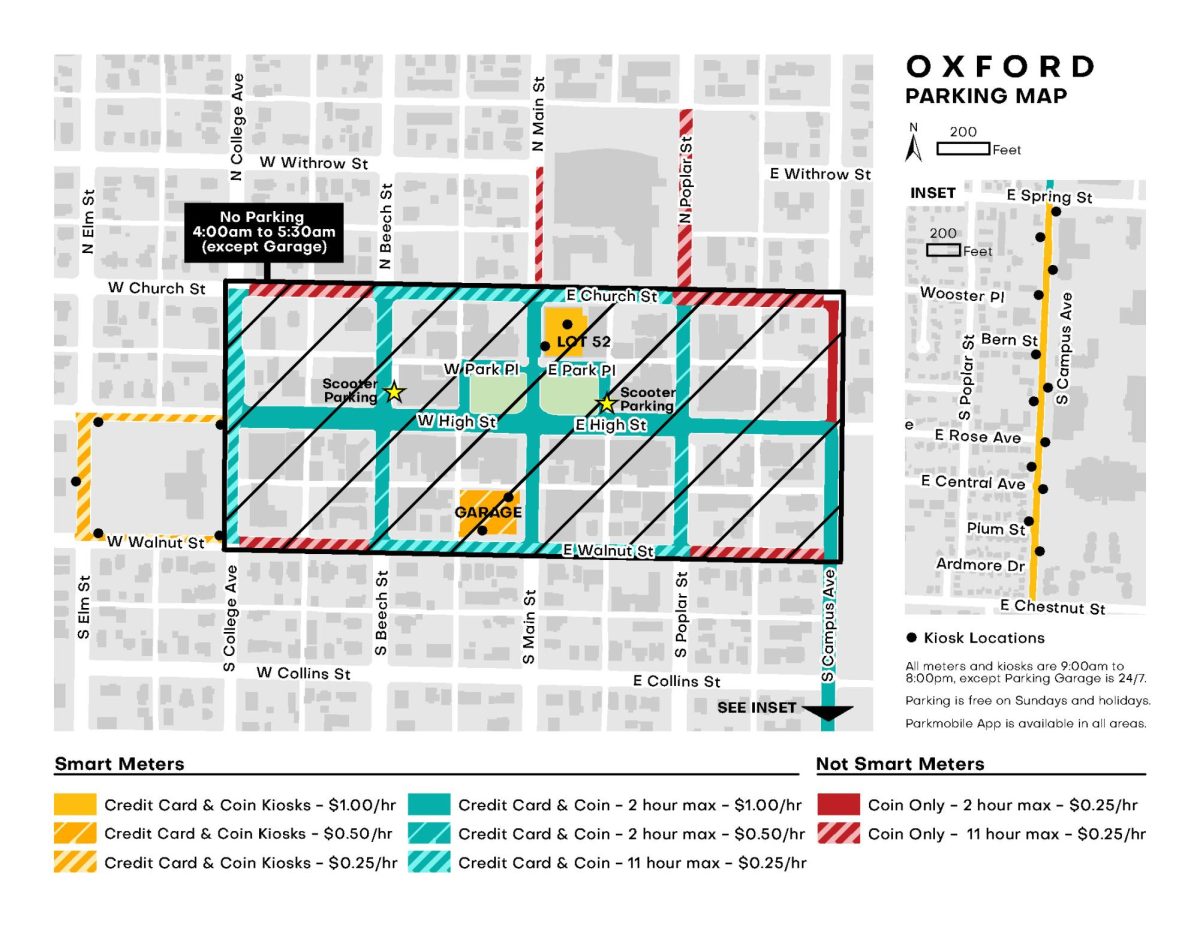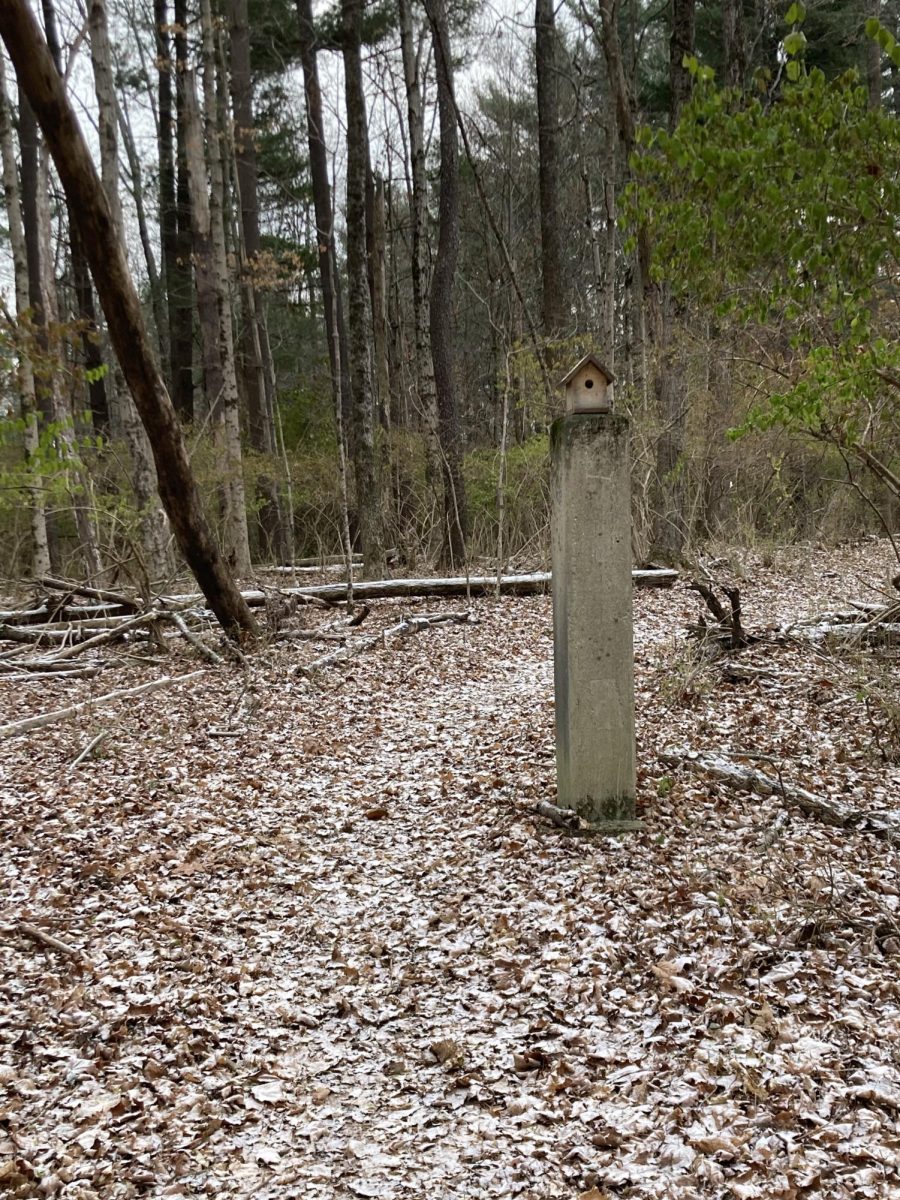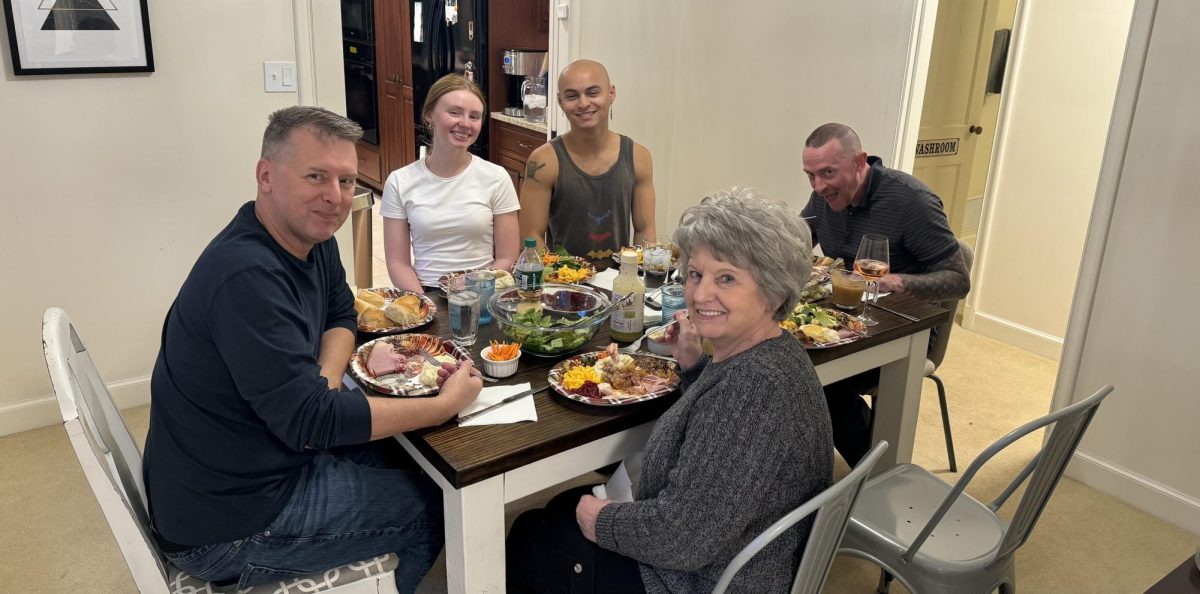On Oct. 14, Caroline Scott Harrison officially comes back to Oxford, when a life-size bronze statue of the 23rd first lady of the United States is unveiled in the gardens behind the Oxford Community Arts Center.
But in a sense, she has never left her hometown.
Caroline Lavinia Scott was born in Oxford on Oct. 1, 1832. Her father, John Witherspoon Scott, was a Presbyterian minister and a professor of science and mathematics at Miami University. While she was growing up, she met Benjamin Harrison, a student of her father’s. They fell and love and were married in her parents’ home at 131 W. High Street, on Oct. 20, 1853.
The marriage took place just after she was graduated from the Oxford Female Institute, which was in the building now occupied by the community arts center.
Caroline Harrison was an activist First Lady. She raised money for the Johns Hopkins University Medical School, but only on the condition that the school admit women on the same basis that it admitted men. In 1893, Johns Hopkins became the first coeducational, graduate-level medical school in the nation.
As first lady she also led the effort to have electricity installed in the White House and she established the tradition of having a decorative Christmas tree in the executive mansion.
Harrison was also the first President General of the Daughters of the American Revolution, which she helped found. This organization was formed in 1890 for women who are directly descended from a person that have been involved in the efforts of United States’ independence.
She died in the White House of tuberculosis, on Oct. 25, 1892, and is buried next to her husband, in Indianapolis. And for a long time after that, her history faded from memory.
But in 2013, the Caroline Scott Memorial Committee was formed in Oxford by Kathleen Fox, Robert S. Wicks, Marjorie Bowers and others.
“We felt that it was important that her life and her legacy be commemorated in some way,”
said Wicks, director of the Miami University Art Museum.
Kathleen Fox, truly inspired by Harrison’s story, said she felt she had a duty to bring attention to this subject.
“There’s a First Lady in our backyard that has not had full attention,” Fox said. “I have got to do something because I see the beauty and we don’t have it. Oxford has been negligent in it.”
The first step this committee took was the creation of a book by Bowers: “Remembering Caroline Scott Harrison: Oxford, Ohio’s First Lady,” which was published in 2013. On May 9, 2014, an Ohio Historical Marker was placed at the OCAC in remembrance of Harrison. The committee felt that the next step was to work at constructing the life-size bronze sculpture of her, to be unveiled at 3 p.m. on Oct. 14. By proclamation of Oxford Mayo Kate Rousmaniere, that date will be Caroline Scott Harrison Day in Oxford.
The design for this sculpture was started in 2015, and construction began in 2017 once the committee received a $75,000 grant from the state of Ohio in 2016, along with other smaller donations. Before the sculpture was completely finished, a cardboard replica of the sculpture was dedicated in 2017.
Jarrett Hawkins of Hawkins and Hawkins Custom of Cincinnati, Ohio, was assigned to create the statue. It depicts the subject as a young woman, much as she looked when attending the school in the building behind her.
A “mini museum” is also being created inside of the OCAC. “We want to establish an area within the Community Arts Center, since that is where she went to school, that has artifacts associated with her life and with her time period,” Wicks said.
There will soon be a stone placed with the Caroline Scott Harrison sculpture at the OCAC that will explain its importance to the public.
“This corner now belongs to her,” Fox said. “It’s got the marker, it has the building where she came to school and it has her sculpture in the back. I’m so proud that now Caroline is not going to be forgotten.”








